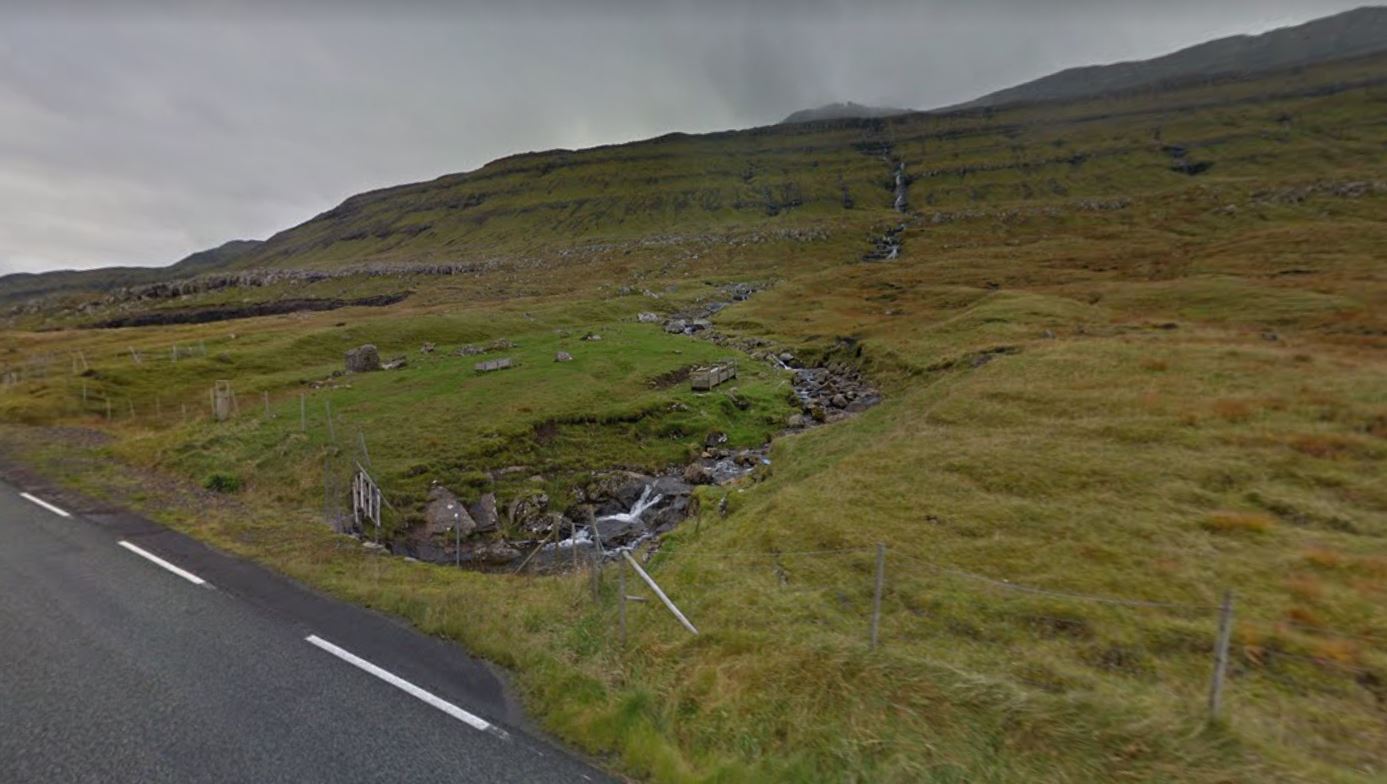With a breathtaking view over the fjord Funningsfjørður, Slættaratindur (880 m) and the surrounding mountains, it is no wonder why Hvíthamar has become such a popular destination
Skálafjørður to Selatrað
A HIKE ACROSS EYSTUROY WITH MAGNIFICENT ROCK FORMATIONS AND GREEN MEADOWS
This route starts at the sandy beach in the village of Skálafjørður, which is also called Skálabotnur. Walk across the sandy beach to the edge of the fjord’s western arm. Then walk around 1 kilometre along the road until you reach Innara Ennisá, north of the stone quarry. Here, you start walking uphill. Go through the gate and stay on the left-hand side of the stream. The route is well marked with cairns. At the top of the steep terrain, walk through stony terrain Ennisstíggjur. It is advisable to keep to the path and watch out for loose stones.
At the top, the path is straight for a long stretch. The terrain is stony at first, then grassy, but there is also some marsh land where you must be careful not to walk in the soft soil, as it can be very deep. You can see a lot here; eastwards you can see Støðlafjall, Gøtueiðið, Borðoyarnes and Sigatindur, and northwards you can see the tall northern mountains of Eysturoy (among others Slættaratindur, which is the tallest mountain in the Faroe Islands). Above you there is Reyðafelstindur and you can clearly see the spectacular basalt intrusion Eysturoyarsyllin (The Eysturoy Sill). Imagine the extreme forces of nature, which were active when the lava emerged up from below and forced itself between the basalt layers over 50 million years ago.
There is a legend about Ormur, a farmer from Skála, who was a murderer and sheep thief. He had killed a farmer from Oyri and his son. Ormur was sentenced to death at the Eysturoyarting (Eysturoy Thing) at Stevnuválur. Stevnuválur is the hill by the creek that runs Millum Fjarða, approximately 50-100 metres south of the place where the river Heltnará flows into Fjarðará. When the sentence was pronounced, Ormur fled and rode along the path that you are walking. Men followed him. The horse collapsed up the hill, so he had to continue on foot. Then, a man with a knife in his hand caught up with him at Selatraðskarð. He threw the knife at Ormur and hit him in his Achilles’ tendon. Ormur was caught and executed. They buried him at Stevnuválur, which has a view across the entire area where he had committed the crimes. When you turn towards Selatrað, Borgarfelli is on your left. You can also see over to Streymoy with Sornfelli and Skælingsfjall to the west. When you come down from the plain, to the north you see Sundalagið, the village Hósvík, and to the south, the fjords Tangafjørður, the mouth of Kollafjørður and the northernmost houses in Kollafjørður.
Above the village of Selatrað, the path goes near a different path which comes from Skála. Make sure not to change paths! You must keep to the cairns on the path to the right. When you have walked down towards the meadow fences, cross the river, which runs by a stone sheepfold. Here, go through a gate and then down to the village by way of a cattle track. Selatrað is also the village where Faroese Scouts often gather to camp.
FACTS
Duration: Three hours
Distance: Seven km
Difficulty: Moderate/difficult. It is steep and difficult to walk uphill from the road. When you get up, the terrain is fairly even. It is grassy down to Selatrað
Maximum height: 360 m
Children: Not suitable for children under eight to ten years as the first part of the trip is difficult and steep
Surface: Grass path with cairns, but rocky in places
Maps: 410, 411, 510 and 511
Special comments: Skálafjørður is also sometimes called Skálabotnur







